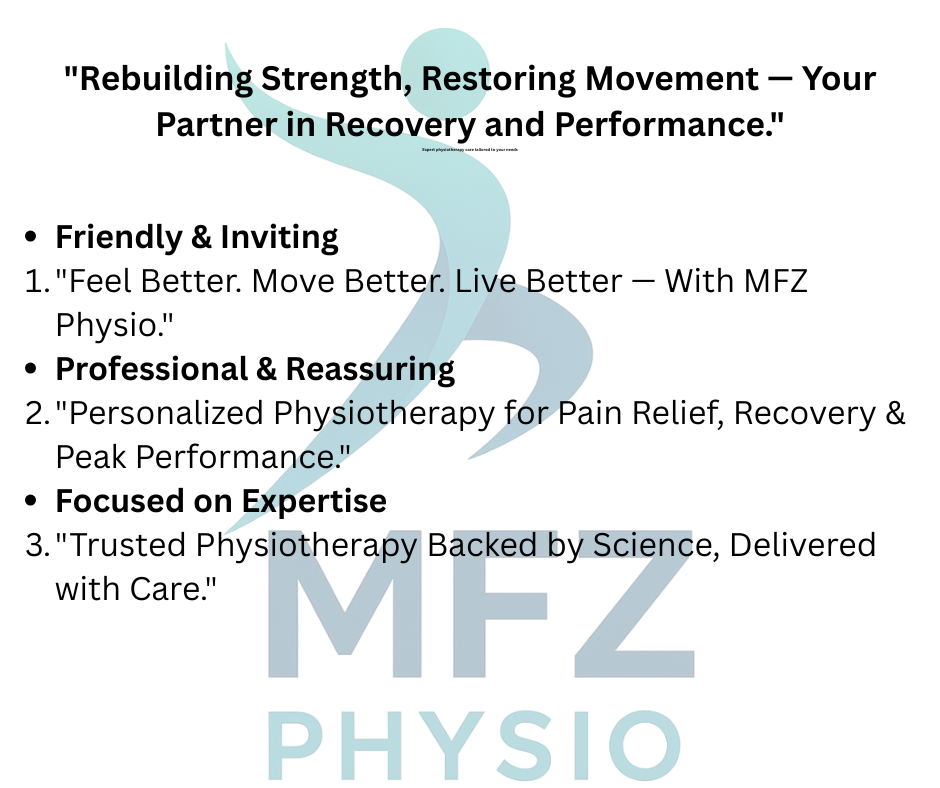Welcome to MFZ Physio – Where Knowledge Meets Recovery
MFZ Physio is your dedicated hub for physiotherapy education and insights. We aim to empower individuals with clear, evidence-based information on physical health, injury prevention, and rehabilitation.
Whether you’re a student, patient, or health enthusiast, we break down complex physiotherapy concepts into easy-to-understand articles, tips, and visual guides.
Because understanding your body is the first step to healing it

🔹 Why Physio Matters
Physiotherapy is more than recovery — it’s about preventing injury, improving performance, and building long-term body awareness.
We believe informed people recover better, move smarter, and live stronger. Our mission is to make physiotherapy knowledge accessible to everyone
